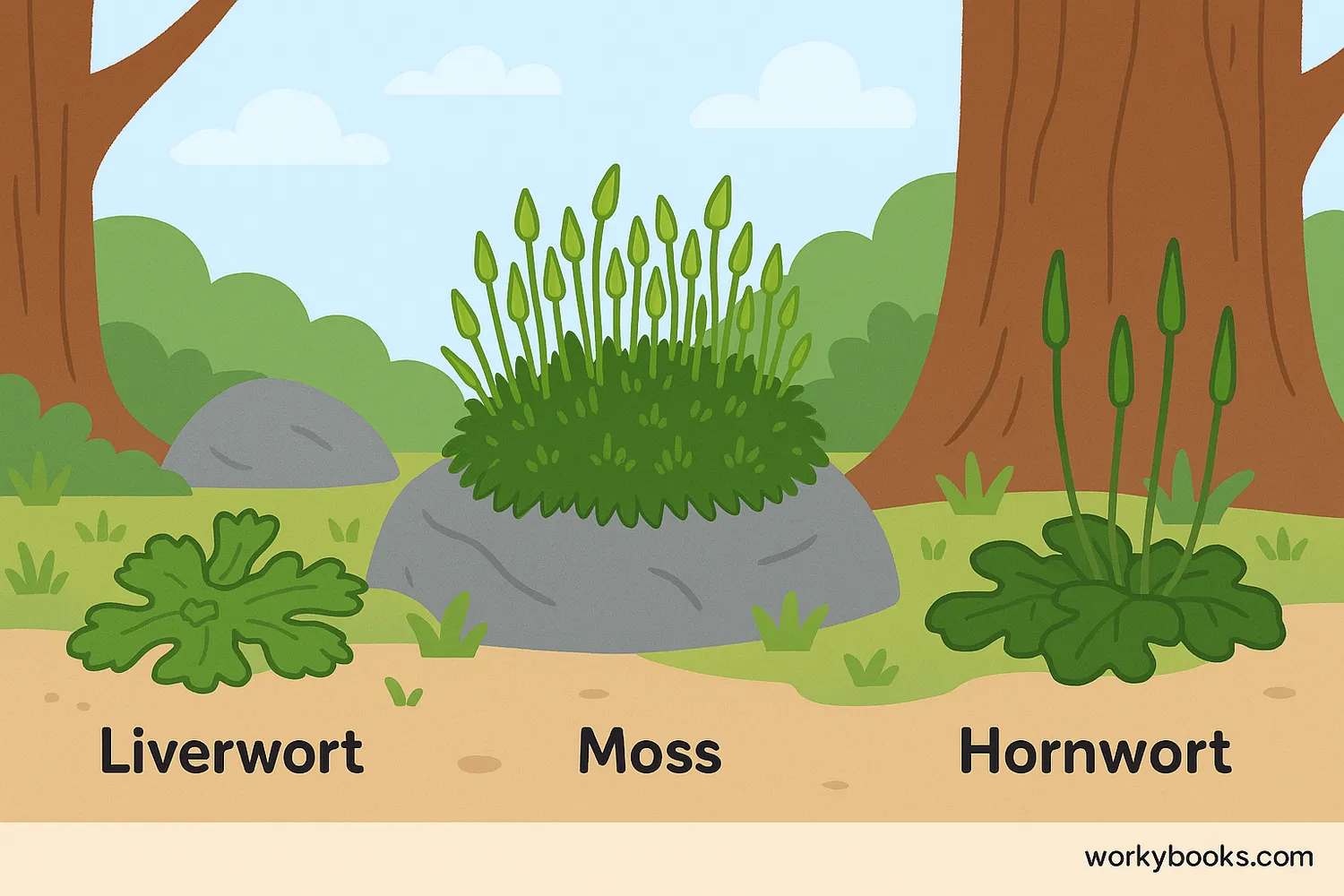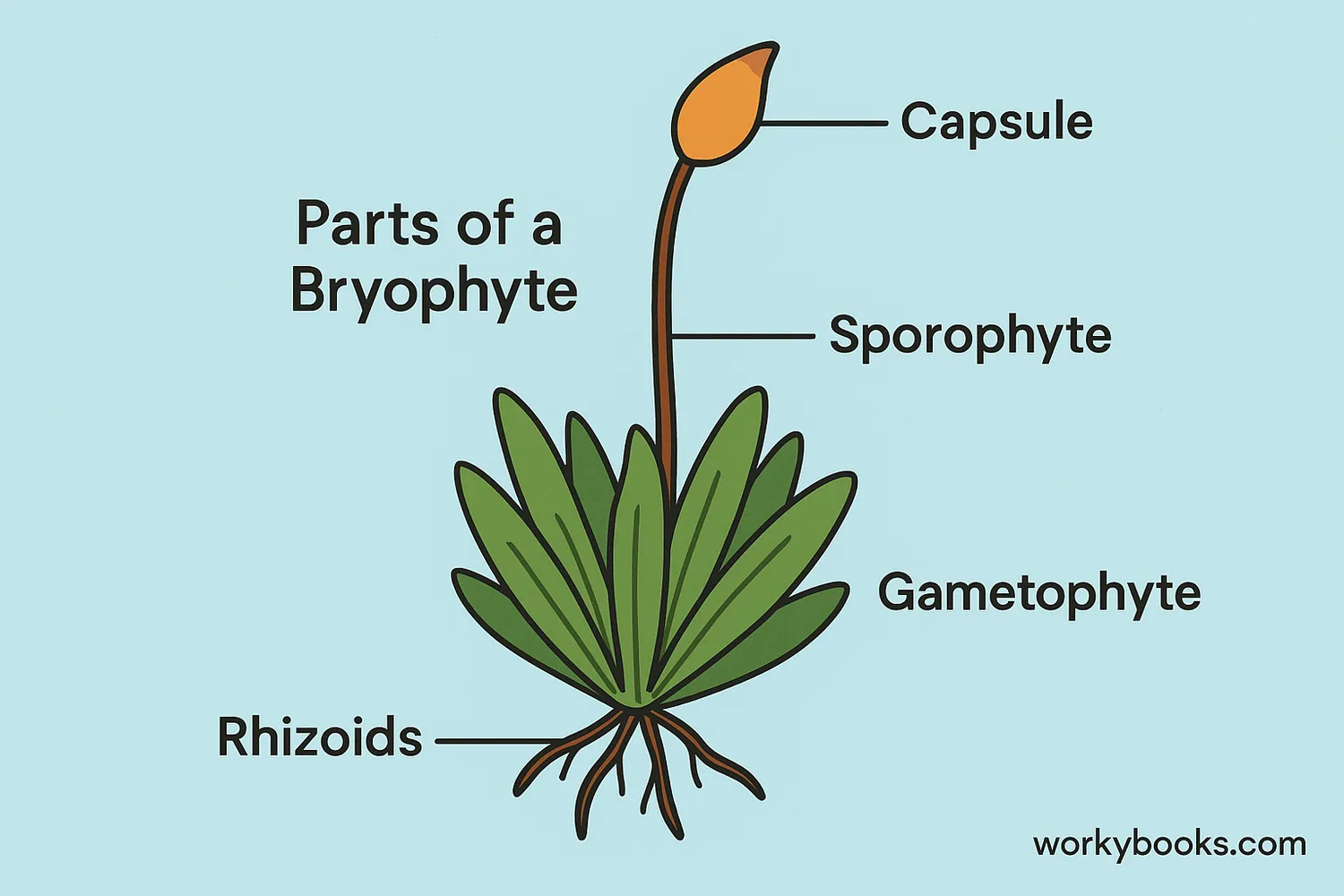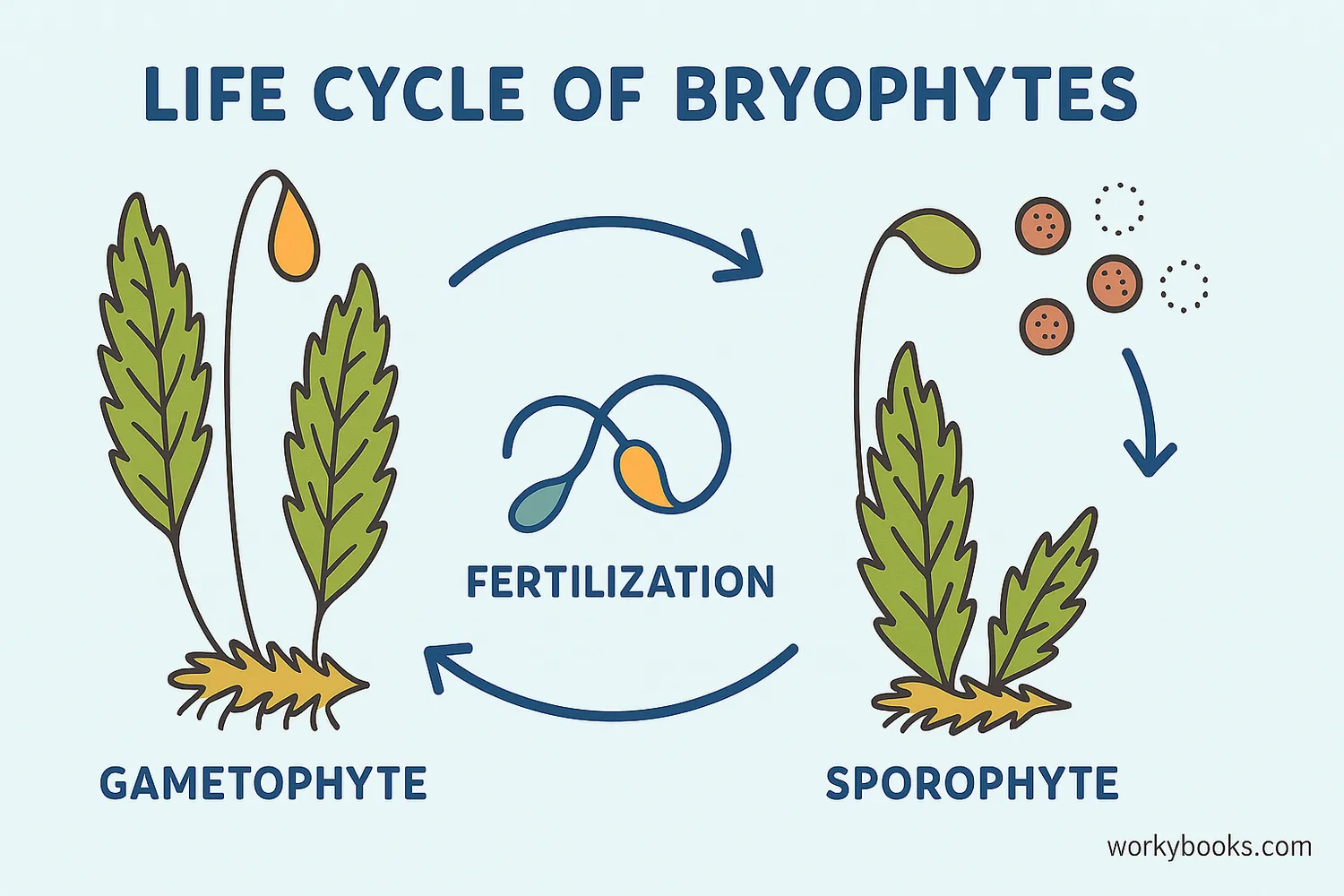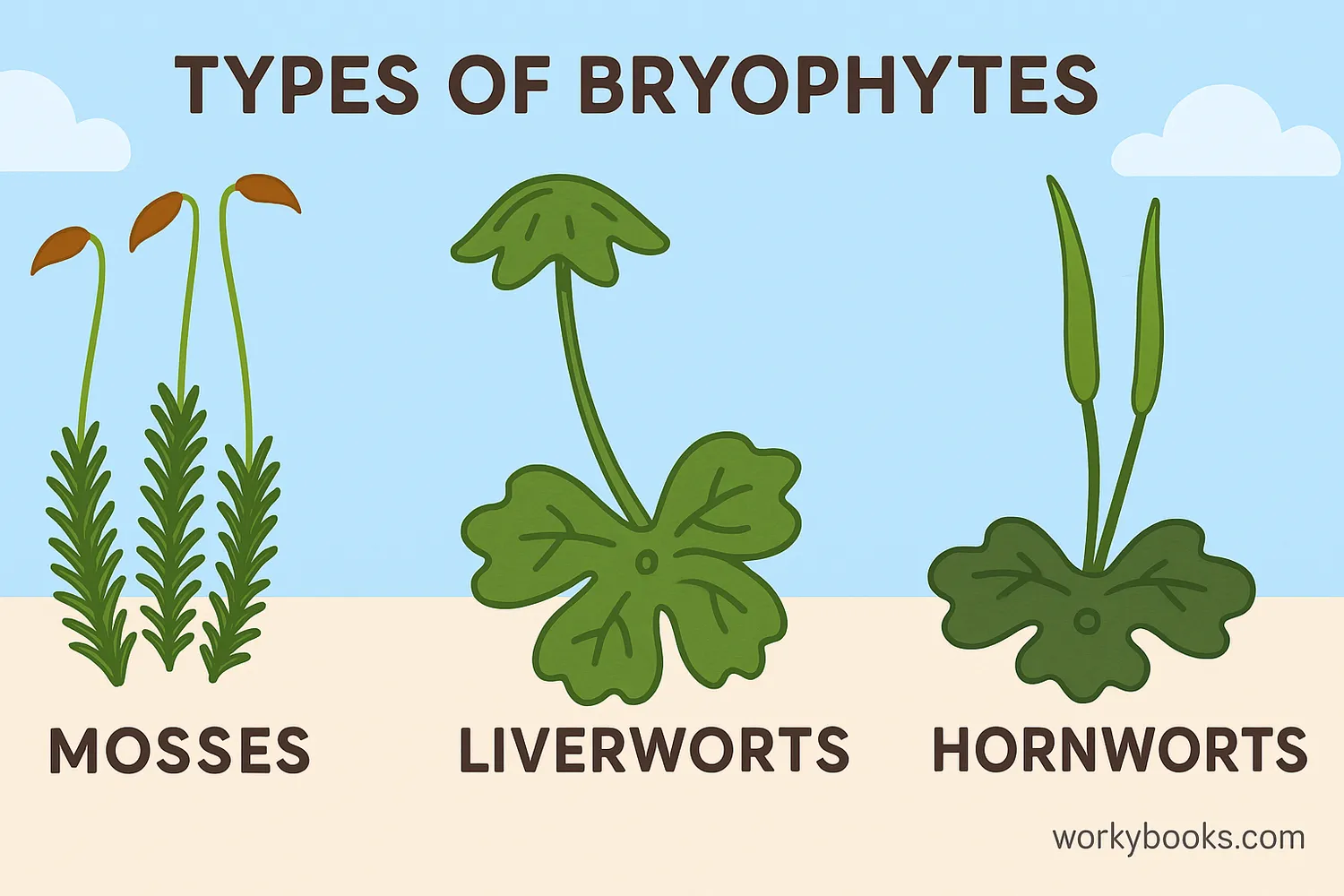Bryophytes - Definition, Examples, Quiz, FAQ, Trivia
Explore the fascinating world of mosses, liverworts, and hornworts
What are Bryophytes?

Bryophytes are a group of non-vascular plants that include mosses, liverworts, and hornworts. Unlike most plants, they don't have true roots, stems, or leaves. Instead, they have simple structures that help them absorb water and nutrients directly from their environment.
These fascinating plants are usually small and grow close to the ground in moist, shady places. They act like nature's sponges, soaking up water and helping prevent soil erosion. Bryophytes were some of the first plants to live on land over 400 million years ago!
Plant Fact!
Bryophytes don't have flowers or seeds like other plants. Instead, they reproduce using tiny spores!
Bryophyte Characteristics

Bryophytes have unique features that make them different from other plants:
No Vascular Tissue
They lack xylem and phloem, the tubes that transport water in other plants
Rhizoids, not Roots
Instead of roots, they have thin rhizoids that anchor them to surfaces
Water Absorption
They absorb water directly through their surfaces
Two Generations
They alternate between gametophyte and sporophyte stages
Because they lack vascular tissue, bryophytes can't grow very tall. Most are only 1-2 cm high. They also need water to reproduce, which is why you'll find them in moist environments like forests, near streams, and in shady areas.
Bryophyte Life Cycle

The life cycle of bryophytes is fascinating and different from most plants. It has two main stages:
Gametophyte Stage
The main plant you see is the gametophyte, which produces eggs and sperm
Sperm Travel
Sperm swims through water to fertilize eggs
Zygote Forms
A fertilized egg grows into a sporophyte
Sporophyte Stage
The sporophyte grows from the gametophyte and produces spores
Spore Release
Spores are released and grow into new gametophytes
The gametophyte is the green, leafy part that makes food through photosynthesis. The sporophyte is usually brown and depends on the gametophyte for nutrients. This two-stage life cycle is called "alternation of generations."
Water Dependence
Bryophytes need water for reproduction because their sperm must swim to reach eggs!
Bryophyte Examples

There are three main types of bryophytes, each with unique features:
Mosses
The most common bryophytes with tiny leaves arranged in spirals. Example: Sphagnum moss used in gardening.
Liverworts
Often flat and lobed like a liver. Some look like tiny umbrellas. Example: Marchantia.
Hornworts
Named for their horn-shaped sporophytes. They often have a symbiotic relationship with cyanobacteria.
You can find bryophytes in many places:
• Mosses carpeting forest floors and rocks
• Liverworts growing on damp soil or rocks
• Hornworts in gardens and fields
Next time you're in a damp, shady area, look closely at the ground - you might discover a miniature world of bryophytes!
Bryophyte Quiz
Test your bryophyte knowledge with this quiz! Answer all 5 questions to see how much you've learned.
Frequently Asked Questions
Here are answers to some common questions about bryophytes:
Fascinating Bryophyte Facts
Discover some amazing facts about bryophytes!
Ancient Plants
Bryophytes were among the first plants to colonize land over 470 million years ago! They helped create the conditions for other plants to evolve.
Super Sponges
Some mosses can absorb up to 20 times their weight in water! Sphagnum moss was historically used as bandages because of its absorbent properties.
Climate Helpers
Peat moss (a type of bryophyte) forms peat bogs that store massive amounts of carbon, helping regulate Earth's climate.
Extreme Survivors
Scientists have revived mosses that were frozen in Antarctic ice for over 1,500 years! This shows their incredible resilience.


